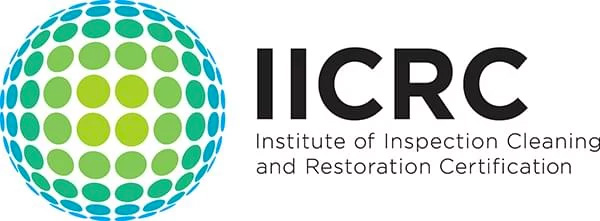Black Colored Mold Vs. Black Toxic Mold
Not all molds are toxic. Just because mold is black doesn’t necessarily mean it’s toxic. The color and toxicity of mold all play an important role when it comes to mold prevention. This is because they have different health effects which also determine how to handle them.
But how, exactly, is there a difference between black-colored mold and black toxic mold? How can you tell which is which? We here at Markham Services have the answers!
Black-Colored Mold: What Is It?
This is a type of mold that contains black pigmentation. It’s usually assumed to be toxic, but that isn’t always the case. While black-colored mold may not have any toxicity, it can certainly be allergenic.
A good example of a non-toxic, black-colored mold is Nigrospora. It poses no known risk to humans and other living organisms. However, Cladosporium tends to be the most frequently found black-colored mold.
Cladosporium is a type of mold that can be both indoors and outdoors. Similar to other common molds, you may find it growing anywhere where there is the presence of moisture, including near leaky pipes, and on the carpet or walls.
Just like Nigrospora, Cladosporium has no known toxic side effects. Heavy exposure to such mold types, however, can lead to increased symptoms of asthma and allergy.

Besides the two aforementioned molds, other black-colored molds include Dresclera, Aureobasidium, Alternaria, Ulocladium, Stemphylium, and Pithomyces. These black-colored molds don’t produce mycotoxins – naturally occurring toxins produced by certain fungi.
Black Toxic Mold: What Is It?
Black toxic mold, or Stachybotrys chartarum, is known to have a very deep black color, and it can at times have a green tint.
It’s the most toxic type of mold. It thrives in both indoor and outdoor environments. Inside, it’s found in warm and moist areas that are high in cellulose and low in nitrogen. Outside, it grows in the soil and helps in breaking down tree limbs, dead leaves, and other organic substances.
Toxic black mold releases substances known as mycotoxins into the air. Mycotoxins are noxious substances that can cause serious harm to humans when inhaled or ingested.
What Causes Black Toxic Mold?
Generally speaking, improper ventilation in the attic is often the cause of black mold growth.
One possibility is the bathroom exhaust fan. Instead of venting outside the house, it vents towards the attic. Over time, this will produce ideal conditions for mold growth. Another possibility is leaks or flooding that haven’t been addressed for a long time.
What Are the Common Effects Of Black Toxic Mold?
Black toxic mold can cause all manner of health issues when inhaled or ingested. The seriousness of health issues generally varies depending on the exposure length.
Even with non-toxic molds, allergic reactions may still occur. This is especially true for people who are more sensitive with their lungs. Alternaria in particular, although it’s a non-toxic mold stain, is known to cause severe allergy symptoms.

To prevent mold successfully, you must be able to find the cause of the moisture problem. Naturally, mold spores float in the air, much like pollen. In a wet environment, the spores will settle and multiply in numbers. In fact, mold spores can multiple in excess of a million spores in one square inch of drywall in a matter of days.
What Are the Common Symptoms Of Black Toxic Mold?
Mold prevention is key to maintaining a safe, healthy home for your family. However, ignorance can lead to potentially costly structural and health issues.
Mold exposure and the respiratory system don’t go along quite well. Common symptoms of toxic mold exposure include persistent headaches, fatigue, sneezing, rashes, chronic coughing, irritation to mucous membranes of the throat and nose, and also irritation of the eyes.
Prolonged exposure to black toxic mold can be life-threatening. Common symptoms include insomnia, memory loss, confusion, mood swings, irritability, vomiting, nausea, and bleeding of the lungs and nose.
If the mycotoxins find their way into a person’s bloodstream, more serious health issues can arise. Heart damage may occur, which may lead to blood clotting and cause external and internal hemorrhaging.
How Do You Prevent Mold?
When it comes to mold, prevention is the best defense you can have. If you see it growing, acting quickly is key. Otherwise, the longer you wait, the worse the problem will only become.
If the problem is small enough, you may be able to remove the toxic black mold by yourself. Some safe yet effective products to kill mold include hydrogen peroxide, tea tree oil, vinegar, and baking soda. If using vinegar, simply put it in a spray bottle.

Remember, you should always wear a mask and cover exposed parts of your body as a precautionary measure.
However, if the problem is big enough or you have existing health issues, it’s best to hire professional help.
Once the mold is eradicated, you have a responsibility to keep it mold-free:
- Use exhaust fans in the kitchen and bathrooms
- Put plastic over dirt in crawlspaces and keep them well ventilated
- Fix any leaks or seepage in the house, indoors and outdoors
- Don’t keep too many indoor plants – especially in the bathroom – as mold can grow in soil
- Wash shower curtains and bathroom tiles regularly with mold-killing products
- Don’t leave wet clothes in the washing machine where mold can quickly grow
- Open windows regularly to help increase the ventilation in your home
- Clean or repair roof gutters. You may also want to keep an eye out for water stains after storms that may indicate a leak
- Direct water away from your home. A negative gradient may lead water into your crawlspace or basement
- Monitor humidity levels in your home. The EPA recommends keeping indoor humidity levels between 30 and 60%. A moisture meter can help you take the measurements
- Dry wet areas immediately. Moisture is necessary for mold to grow. Never let a spill even on the carpet last more than a day
Bottom Line
There you have it. Everything you need to know about black-colored mold and black toxic mold. Remember, prevention is better than a cure when it comes to mold issues. There are dozens of products to help you keep your home mold-free.
However, if the problem persists, you aren’t confident in your abilities, or can’t pinpoint the moisture source, contact a professional like Markham Services right away!


